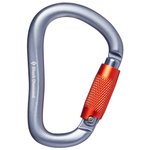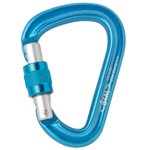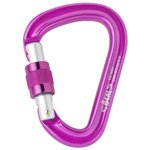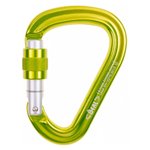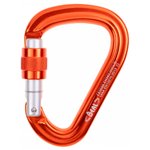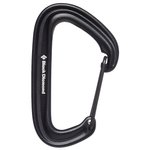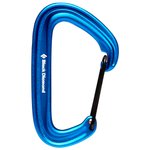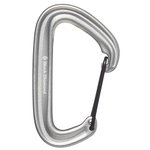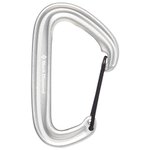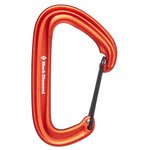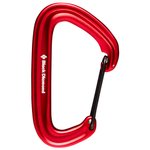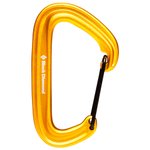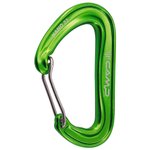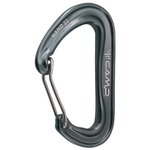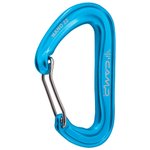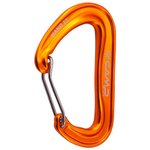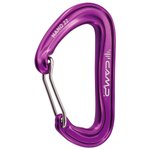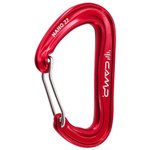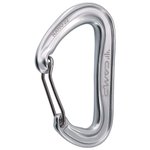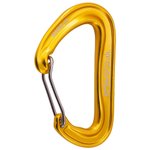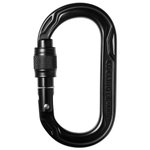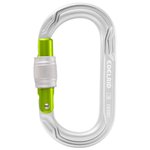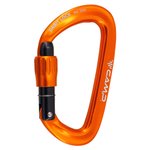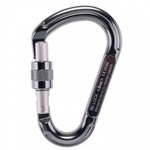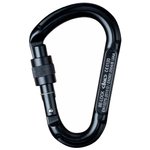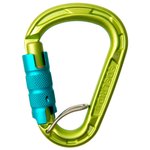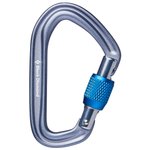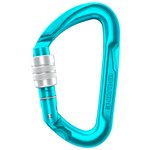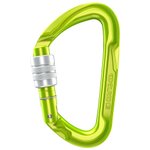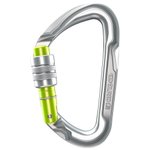Carabiners
How to choose the right carabiner?
The carabiner is an important element of climbing hardware and more broadly speaking of your climbing and mountaineering equipment . This small metal object, available in several sizes and shapes, is the connector between your rope and your belay point. It is an essential safety element, so choosing and using it properly is essential before going out on an expedition. Its characteristics depend on your activity and your goals.
Read more Show less
 10% off
10% off
Recommended price
£16.38
-22%
£12.65
Black Diamond's RockLock Twistlock Gray is a wide, lightweight, and practical carabiner for one-handed operation.


Recommended price
£13.76
-15%
£11.65
-


Recommended price
£8.19
-16%
£6.83
The Black Diamond Litewire Black carabiner is ideal for trad climbers.


Recommended price
£8.19
-16%
£6.83
To easily carry your hardware when climbing, the Litewire Blue carabiner from Black Diamond is ideal.


Recommended price
£8.19
-16%
£6.83
The Black Diamond Litewire Green is meant for trad climbers looking for a practical carabiner.


Recommended price
£8.19
-16%
£6.83
With a larger rope-bearing surface, the Litewire Octane carabiner from Black Diamond offers a very appreciated strength.


Recommended price
£8.19
-16%
£6.83
The Litewire Red from Black Diamond is a lightweight and durable wiregate carabiner.


Recommended price
£13.56
-13%
£11.74
-


Recommended price
£9.92
-9%
£9.01
The Camp Orbit Lock Orange is a very lightweight screw gate carabiner, ideal to use at a belay stance. The etched marking ensures the sleeve is in place, while the SphereLock nose improves safety.


Recommended price
£15.47
-15%
£13.10
-


Recommended price
£25.48
-14%
£21.66


Recommended price
£11.83
-16%
£9.92
-


Recommended price
£11.37
-12%
£9.92
-
INCLUDED
DAYS FOR
CHANGING
YOUR MIND
Loading...
What are the various types of carabiners?
To begin with, we will cover the parts shared by all carabiners. A carabiner is constituted of a frame in the shape of a link, this is the load bearing part. And a gate, the spring-loaded side of the carabiner, it opens and is used as a connexion to your equipment. For mountaineering and ski touring, aluminium carabiners are favoured for their lightness.
Oval shape carabiners
Oval carabiners have been a classic for decades. This shape allows easy rotations while being very stable. An excellent choice to connect a pulley. However, it can show its limitation when the force is important due to its symmetrical shape that transfers the load evenly between the frame and the gate, weakening the whole in the process.
D shape carabiners
Designed around an asymmetrical shape, a D shape carabiner transmits the force more toward the frame than the gate to maximize strength. It is the most common shape, it allows to connect an anchor point or use a bit of tether. Furthermore, thanks to this design, it is lighter and has a wider opening than the others.
Pear shape or HMS carabiners
Designed for belaying, this shape very easy to use thanks to its very wide opening. Its thick frame allows to receive big knots and various devices. If you are undecided on which shape to choose, a pear carabiner is a safe bet, and is suitable for most manoeuvres.
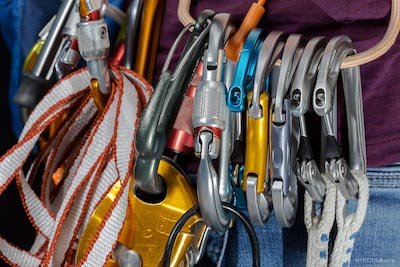
What are the various locking mechanism types for carabiners?
A locking carabiner has a similar design and function as a non-locking carabiner. The difference? A sleeve on the gate is used to securely close it on the nose. This provides extra safety and avoids the risk of unwanted opening. Carabiners featuring a locking mechanism are called safety carabiners, those without are called progression carabiners.
Screw-lock carabiners
Screwgate carabiners feature a threaded sleeve that must be manually done or undone to close or open the gate. It remains possible to handle it with gloves on and does not freeze. However, be careful not to forget to lock it!
Auto-lock carabiners
Automatic locking carabiners, like the name suggests, lock automatically in two or three moves, depending on the model. Locking is done thanks to a sleeve that requires twisting, preventing you from forgetting to lock it and guaranteeing maximum safety. However, the system is more sensitive to freezing, dirt or dust and has a tendency to make opening more difficult.
What is the best carabiner for a lanyard or belaying?
Depending on the intended use, you won’t choose the same type of carabiner. Various situations, require carabiners of varying shapes. For belaying with a tube style device or Munter hitch, a a pear shape carabiner is ideal thanks to the large rope bearing surface. A model equipped with a gate that secures the rope in place improves safety even further when belaying.
If you need a carabiner for a lanyard, a D shape carabiner is better suited. It must be a locking model as well, when it comes to climbing and mountaineering, safety first!
Which carabiner to use with a Grigri?
Petzl recommends using a D shape carabiner, a pear shape model can rotate more easily and end up in the wrong position. As you are connecting only one device, a large opening isn’t needed. An automatic locking mechanism is better if you’re forgetful.
Wire or solid gate carabiner, which is the lightest and strongest?
This may seem counter intuitive, but wire gate carabiners are stronger! Of course, they are lighter as well. Their main drawback is the difficulty to fit a keylock system on them. Luckily, manufacturers have developed solutions to prevent nose hooking. To this day, there is no locking mechanism for wire gate carabiners.
Strong and ultra-durable carabiners for belaying at Glisshop
On this page, we offer a large selection of carabiners for rock climbing and mountaineering, to furnish the gear loop of your harness and complete the most beautiful climbs! If you’re still unsure about the model to choose, stop by our store in Aubière, Auvergne, France, close to Clermont-Ferrand or contact our experts via email, phone or chat, they’ll help you select the carabiner you need for your goals.

